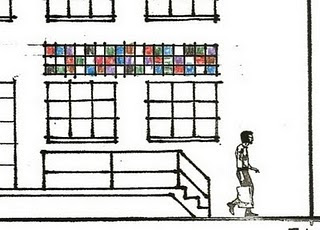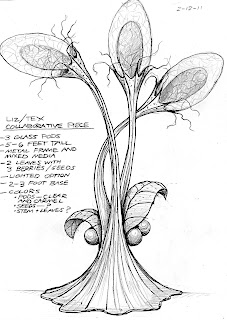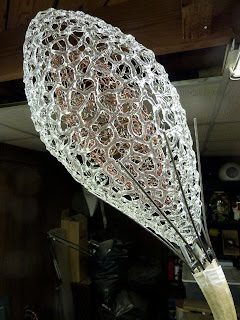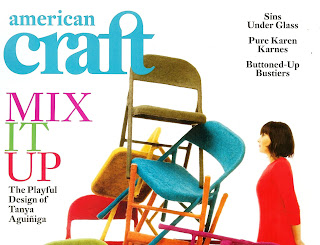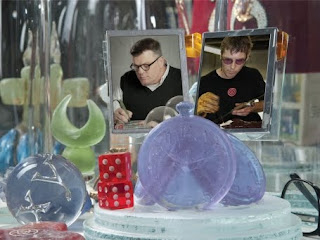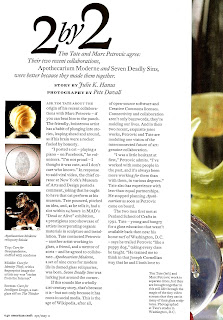The Collaboration…..

“All That Is Solid Melts Into Air” Michael Janis & Tim Tate; 2019, fused glass, cast glass, sgraffito imagery, steel; 6′-0″ x 9′-0″; Photo credit: Pete Duvall.
Michael Janis and Tim Tate have worked together as Co-Directors of the Washington Glass School and Studio for more than 15 years, working on their own individual work, teaching and creating a functioning arts studio in the nation’s capital.
This summer, the two artists decided to build on that rich and storied history by collaborating on an impressive piece that would both combine and challenge their individual, and strongly, narrative work.
“All Things Solid Melt Into Air” is the title of their 6’ x 9’ wall installation, comprised of 54 separate kiln cast glass insets. To create this work, the artists made 42 separate bas-relief plaster molds, 12 sgraffito glass powder drawings, 12 lost wax glass castings and 4 months to produce this spectacular and monumental work.
Referencing mankind’s interaction with nature as the artwork main theme, Tim and Michael set about to produce an experience that people will want to engage with…on a tactile basis. One can explore each of the olive tinted glass tiles to feel sentiments and poetic visions of the artists, or step back and just enjoy the piece as one would enjoy a bird’s song. They are both immensely proud of this work, which will be shown at the Habatat Prime exhibit during SOFA Expo in Chicago, (October 31, 2019 – November 3, 2019).
Habatat Prime
Location: Roosevelt Collection @ 1023 S. Delano Court East, Chicago, IL 60605
Habatat will have transportation to and from the space that is 3 miles from the Pier.



